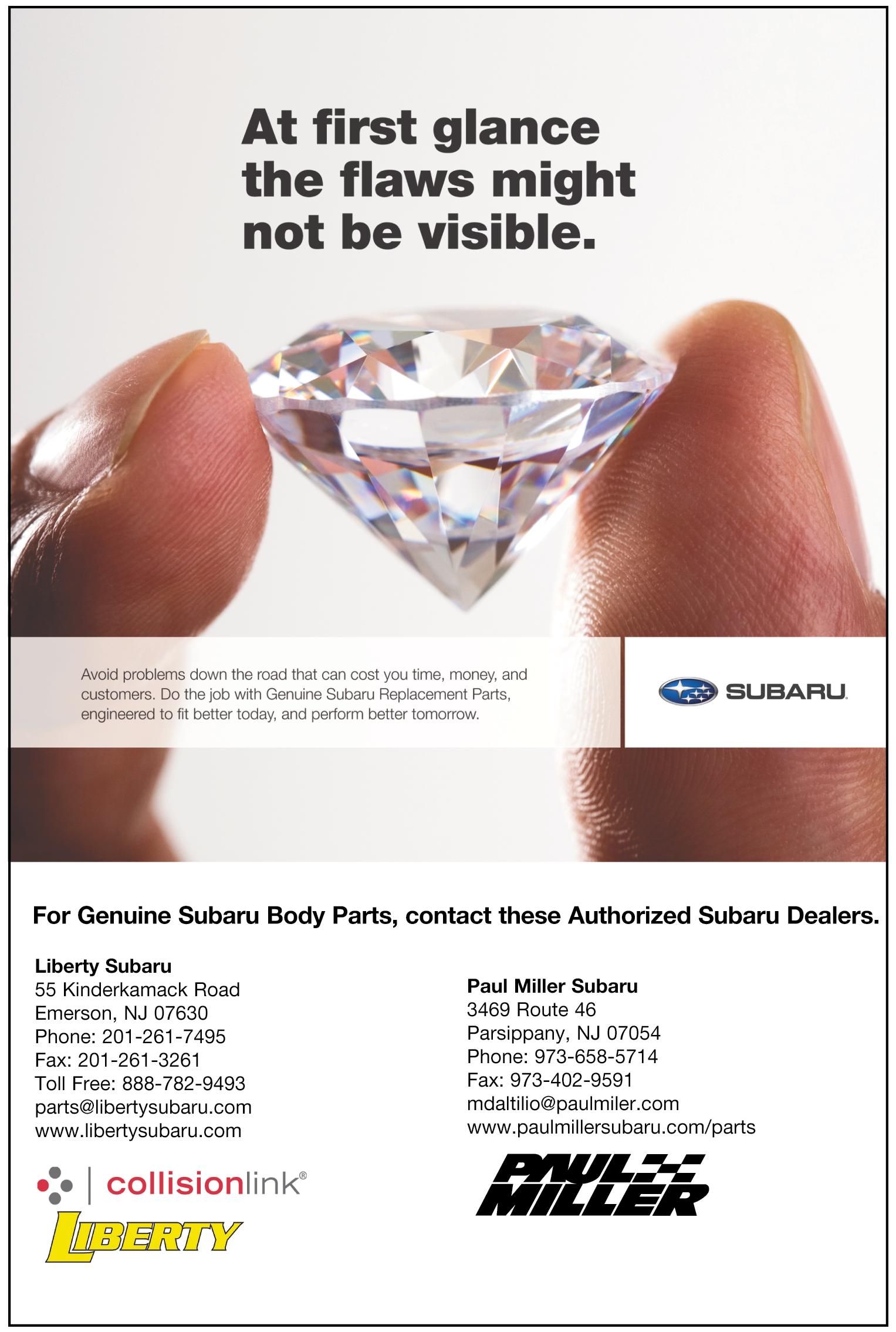
16 minute read
Navigating the Storm: Shops Prepare for the EV Evolution

Shops Prepare for the EV Evolution
As electric vehicles (EVs) become increasingly prevalent on the roads, collision repair shops have begun seeing more damaged EVs in need of repair, but are EVs really that common? How will the increase in EVs impact shops? And how can auto body repair facilities prepare for and adjust to the morphological changes in the industry’s landscape without being submerged?
Industry experts shared advice about how shops can prepare for the onslaught of constantly advancing vehicle technology in last month’s New Jersey Automotive (find their tips at bit.ly/NJAEV0622), but who better to provide practical recommendations for proactively bracing for impact from the “Technical Tsunami” than the shops that have already ensured the future viability of their businesses by investing in the tools, equipment and training to repair EVs? Three cuttingedge New Jersey shop owners offer insights on surfing the incoming wave of technology. How many EVs are actually out there? By the end of 2021, more than 64,000 hybrids and EVs had been registered in New Jersey, compared to 41,000 in 2020 and less than 30,000 in 2019 – proof that the EV evolution is well underway in the Garden State. “EVs and hybrids are basically the norm in this location because we’re among the few shops certified by Tesla and Rivian,” said Mike Daniel (Mountain View Auto Collision Center; Wayne). “The technology is there, and people seem to be trending toward EVs, especially as gas prices keep increasing.” “The change over the past five years has been surprisingly rapid; EVs are the number one car we repair in this facility,” Jerry McNee (Ultimate Collision; Edison) corroborated. “The government is pushing for it, and OEMs are looking in that direction. Every OEM is releasing EVs… There are probably 25 companies which most of us have never even heard of that are building EVs.” Agreeing that there’s “no doubt we’re seeing more EVs now than we were two years ago,” Eddie Day (Collision Restoration; Fairfield) noted that EVs are “cleaner but way more complex. The front engine bay is completely open, granting us more access to the structure compared to an internal combustion engine, but we also have to deal with software and firmware updates.” Preparing for the EV evolution requires shops to adjust their shops and business practices in a multitude of ways.

Tools & Equipment
Shops need to invest in different tools and equipment to work on EVs than they would need for repairing traditional vehicles.
“The OEMs send their updated list of tools and equipment required each year, and those requirements are ‘do or die,’” according to Day. “If you don’t have that welder by the deadline, you’re shut off. There’s zero tolerance when it comes to equipment standards.” “When you need this frame machine or welder NOW, you’re easily looking at $150,000 or more in expenses without even mentioning very many tools,” McNee added. “We purchased multiple battery cables and all sorts of different electrical equipment as well as specific ADAS equipment,” Daniel shared. “Our multimeter allows us to shut down the high voltage (HV) and check the amperage level to make sure it’s safe to touch…and we have a shepherd’s hook to pull technicians off the car in case they do get electrocuted.”
Training & Safety
Investing in the proper training to ensure EVs are repaired properly and safely – for both the consumer and the technician – is imperative. As I-CAR’s Dirk Fuchs pointed out during the most recent Collision Industry Conference, “A mistake is not allowed when we talk about electric vehicles. Before I touch a car, even with PPE, I need to check the potential and measure. If I’m not verifying anything and I take the battery out of the chassis and it has an internal insulation error, I’m taking out my bonding strip, and all of a sudden, Dirk is the bonding strip between the battery and the ground. And that’s a problem. The unknown is what kills you. I think I know what I’m doing, but I have a deep respect for those systems. If I make a mistake, I’m dead, and I like being on this planet.” “Technicians repairing EVs must have the knowledge to know which wire can kill you and what needs to be shut down,” Daniel stressed. “We have to be electricians on top of everything else to repair these cars.” “The investment in training is constant and expensive,” Day stated.
In addition to the outright expense to send technicians to training classes, shops contend with lost production hours while a valuable employee is out of the shop to learn how to repair EVs.
“Training is more important than anything else when it comes to EVs,” McNee emphasized. “Even a simple panel dent may require disconnection of the HV system, which can only be done at the dealership, but most shops look at it as ‘just a dent.’ Insurers see it as ‘just a dent.’ But the process for repairing that dent is completely different when you’re working on an EV. Safety is the biggest thing, and shops have to be extremely cautious.”
Facility Logistics
Shops should also consider certain facility logistics as they prepare for EVs.
“You really need to have enough room in and around your shop too,” Daniel urged. “A collision-damaged EV needs to sit outside for a certain period of time with a specific amount of space around it in case it catches fire. Lithium fires don’t go out; they burn long and hot. We’re fortunate to have a 40,000 square foot building on two acres, but can a six-bay shop really follow all that protocol?” “Do you have the right fire suppression system?” McNee posed. “Water won’t put it out. These little caveats continuously add up and cost shops more money as they prepare to tackle EVs.” EVs also need access to power during the repair process. “We installed five charging stations around the shop, plus two mobile stations for while the car is in progress, to keep the car maintained because customers receive low battery alerts and will call for an update,” Day revealed.
“Most shops don’t have the power to support a resistance welder,” McNee contributed. “What will you do when you have EVs that need to be charged? I was fortunate that my electrician installed 800 amps in my facility a few decades ago, but there’s definitely a cost associated with upgrading the lines to accommodate EVs. Spending an additional $10,000 was certainly eye-opening, but we need places to plug these cars in. Unfortunately, businesses cannot add 800-amp service without proving the need for it, which includes township approvals and an electrical engineer to determine the location of the outlets, the distance from the power source and the right cables to use. It has cost me thousands, but I’m fortunate that I didn’t have to invest $50,000 in a new electrical panel and tie it into the grid.”

Consumer Concerns
Low battery alerts aren’t the only things causing concern for EV owners. Cost poses a hurdle for many vehicle owners since EVs are more expensive than traditional vehicles.
“Tesla’s base model starts at $40,000 and increases, so we’re still seeing that as an elitist vehicle that not everyone can afford, and the most cost-effective EVs being developed aren’t as visually appealing,” Daniel acknowledged. Beyond cost for the EV itself, consumers will also need to anticipate the costs (monetary and otherwise) associated with these vehicles. Experts have long expressed reservations about the country’s ability to meet the infrastructure demands needed to sustain an influx in EVs, but consumers have their own series of concerns related to the grid and EVs in general.
“In rural areas, charging stations are spread out, and in congested areas, there aren’t enough charging stations for everyone,” Day observed. “I hope this doesn’t turn into a situation like the Gas Crisis in the 1970s with people fighting over power.” California has been an early adopter of EVs, and as a result of the power those vehicles utilize, less electricity is available for other necessities.
“They’re seeing rolling brownouts because they don’t have enough power to supply the grid,” according to McNee. “If we have 200,000 EVs registered in New Jersey five years from now, we’re probably going to have rolling brownouts as well. Can you imagine shutting your shop down during the day because there’s not enough power in the grid?” “If half the neighborhood is charging their EV, what happens to our air conditioners?” Daniel asked. “Our current grid is not equipped for more than seven to 10 EVs per neighborhood. There aren’t many charging stations out there, but there’s a gas station on every corner, plus the quickest charge time takes 25-30 minutes. A family sitting in traffic on the way to the beach starts wondering when their vehicle will die, and that fear has led to a new term: range anxiety.” “Without the range being there, family road trips take a lot longer, limiting accessibility and leading to range anxiety,” Day agreed. “Most Americans love their automobiles, so that’s a huge obstacle that needs to be overcome.”
The current infrastructure poses potential problems for vehicles other than EVs, though, as Daniel pointed out. “We’re seeing this type of technology in ALL cars, so what will those radars be reading on roads filled with potholes and faded lines or when there’s construction?”
Shop owners also predict that it’s only a matter of time before corporate greed drives the cost of electricity as high as gas prices. “It cost $2-3 to charge an EV when they first came out, and then it went up to $8 before increasing to $18,” McNee recalled. “It’s only a matter of time before it costs $80 to charge an EV, and when you’re working on them in the shop, your costs increase. Since I operate during the day, I pay a premium demand surcharge as well.” Additionally, Daniel raised the question of “how green are EVs actually? Electric often comes from coal, not wind or water, and just because you don’t see it getting burned doesn’t mean it’s not happening. Add in the tanks, boats and trucks transporting materials and supplies, and I don’t think EVs are as ‘green’ as people believe.” “The Federal Government is pushing EVs as a way of cleaning up the environment, but there’s still a detriment,” McNee agreed. “They’re overlooking the big picture of the cost to produce these vehicles and the fossil fuels required to create the products. It’s a lot more complicated than it appears at first glance.”
OEM Certification
Because EVs are so complex – and extremely dangerous when repaired improperly – it’s not surprising that many collision industry professionals foresee OEM certification playing a more significant role in the future. “Vehicle manufacturers are absolutely concerned about their products being repaired correctly, so they’re starting to get more involved,” McNee reported. “Turning that battleship around won’t happen overnight, of course, but it’s important to have the correct tooling and training to correctly fix EVs, so OEMs are going to push certifications harder and harder. At the same time, insurers are lightyears away from writing

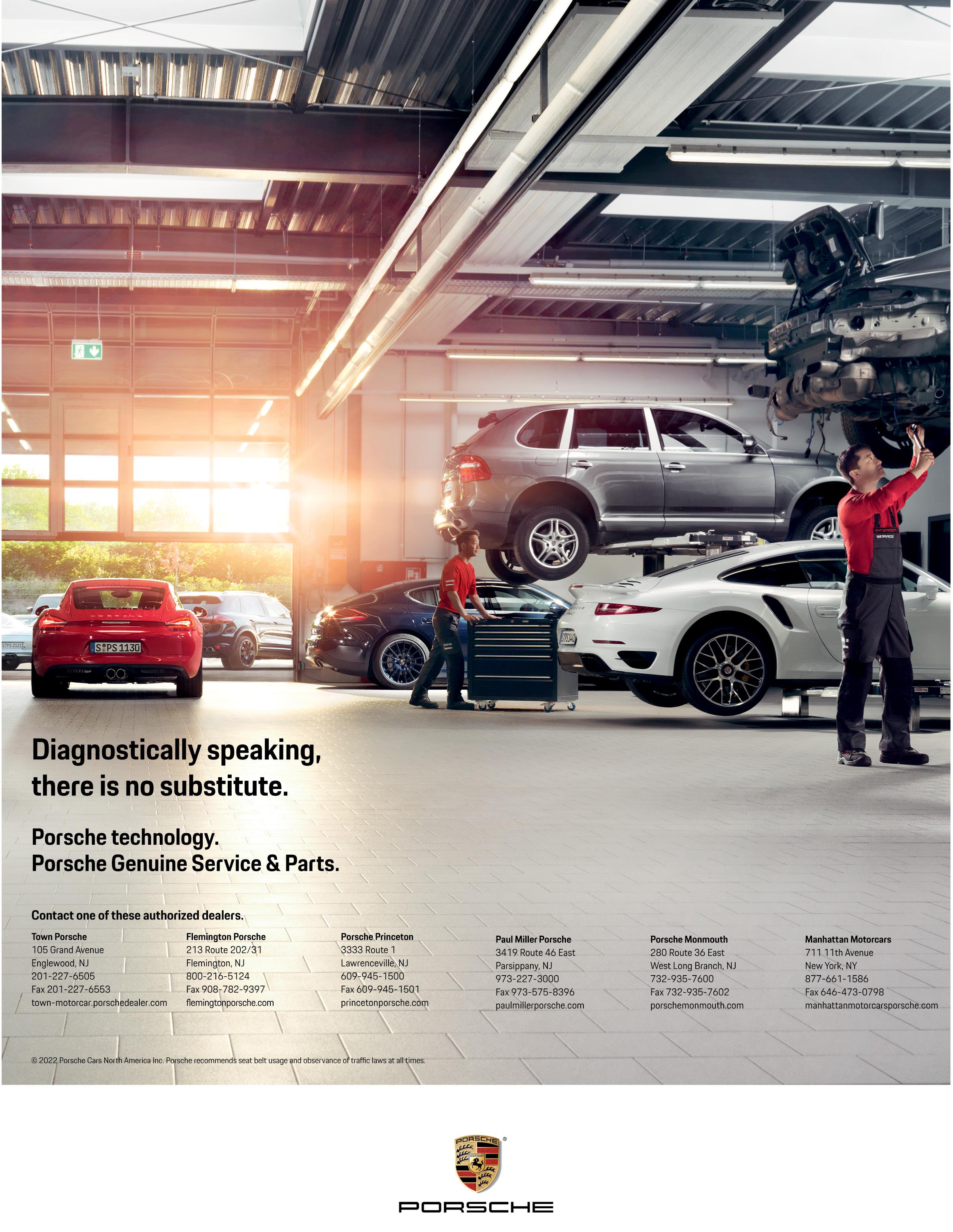
continued from pg. 10 watched our show. The next night, the phone rang. It was my daughter. “Dad, this is so weird. All the writing on Netflix is in a foreign language.” “Huh?” “Yeah, Zak (her boyfriend) signed in, and everything is in some Asian language.” “Hold on a minute. Zak is Dean???”
She started laughing. “Um, yes.” “Why the f#@k would he call himself Dean???” “He likes to use different names for his logins.”

The great mystery had been solved. I wasn’t hacked. I was dumbstruck. Meaning struck by how f@#king dumb it is to use a fake name to sign into my Netflix account! I set the language back to English, and from that point on, I have called Zak “Dean.” I don’t think he appreciates it, but if you’re going to be a part of this family, you need to have a sense of humor.
Man, it was so much simpler when we only had three channels, wasn’t it?
NJA
THOMAS GRECO PUBLISHING We do all of the heavy lifting so you can focus on what’s most important: GETTING YOUR MESSAGE OUT THERE.
Greco Publishing has successfully served the automotive repair industry for over 30 years in print, online and as an association liaison. Our publishing team handles all pre-press production in-house, from ad design to editorial layout.
Greco Publishing also provides a variety of different services to cover the needs of our clients, helping to facilitate day-to-day business. 973.667.6922 info@grecopublishing.com
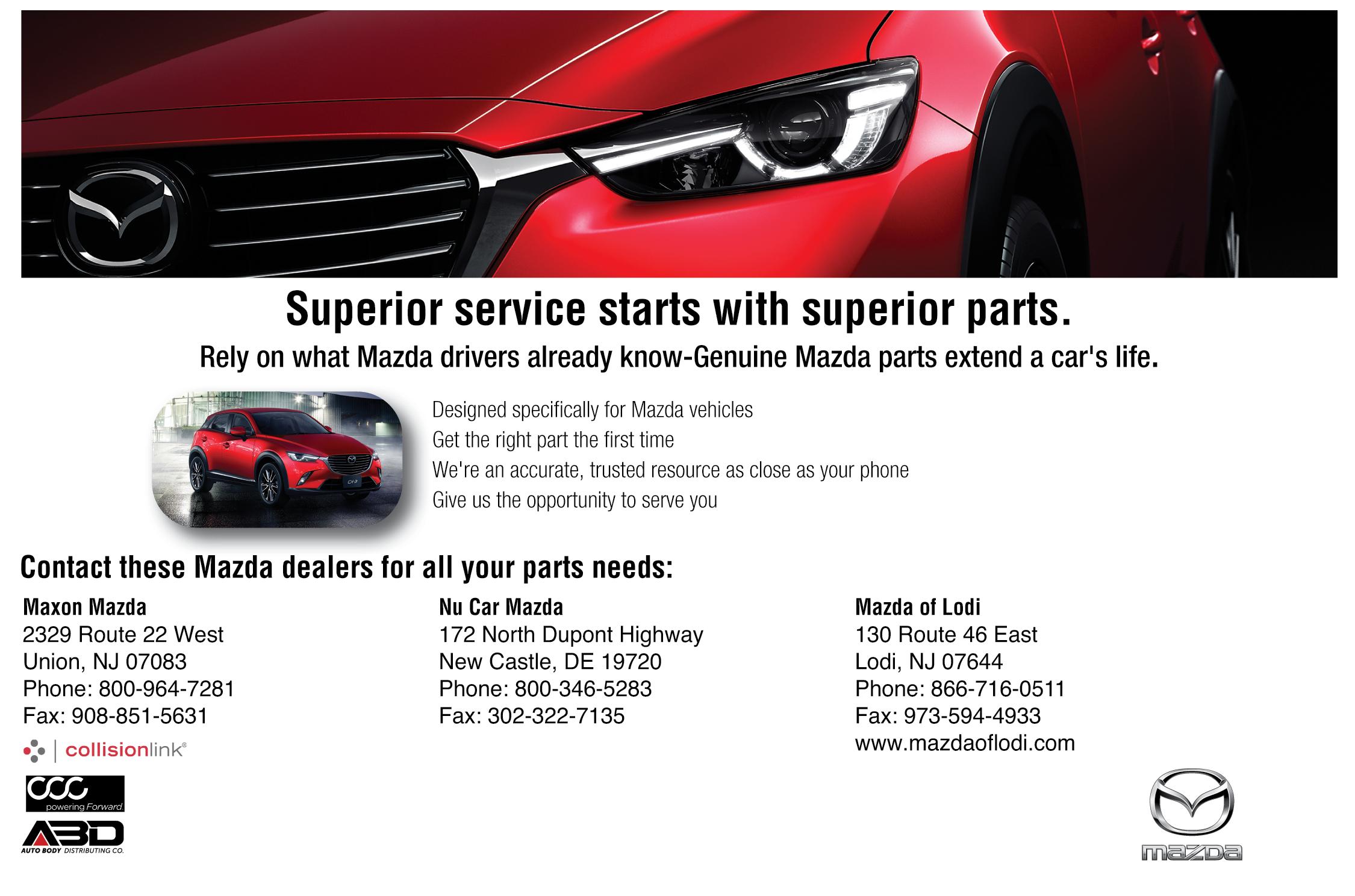
Superior customer service starts with Town Audi and Audi Genuine Parts.
• Our expert parts staff is ready to serve you with over $500,000 in inventory and a fleet of trucks to help ensure same-day delivery on most orders
• We respect your time, and offer a quick and accurate order process to help meet your needs
• Proudly serving theTri-State area with
Audi Genuine Parts since 1970
• Same-day delivery on stocked items, next-day availability on most non-stocked items
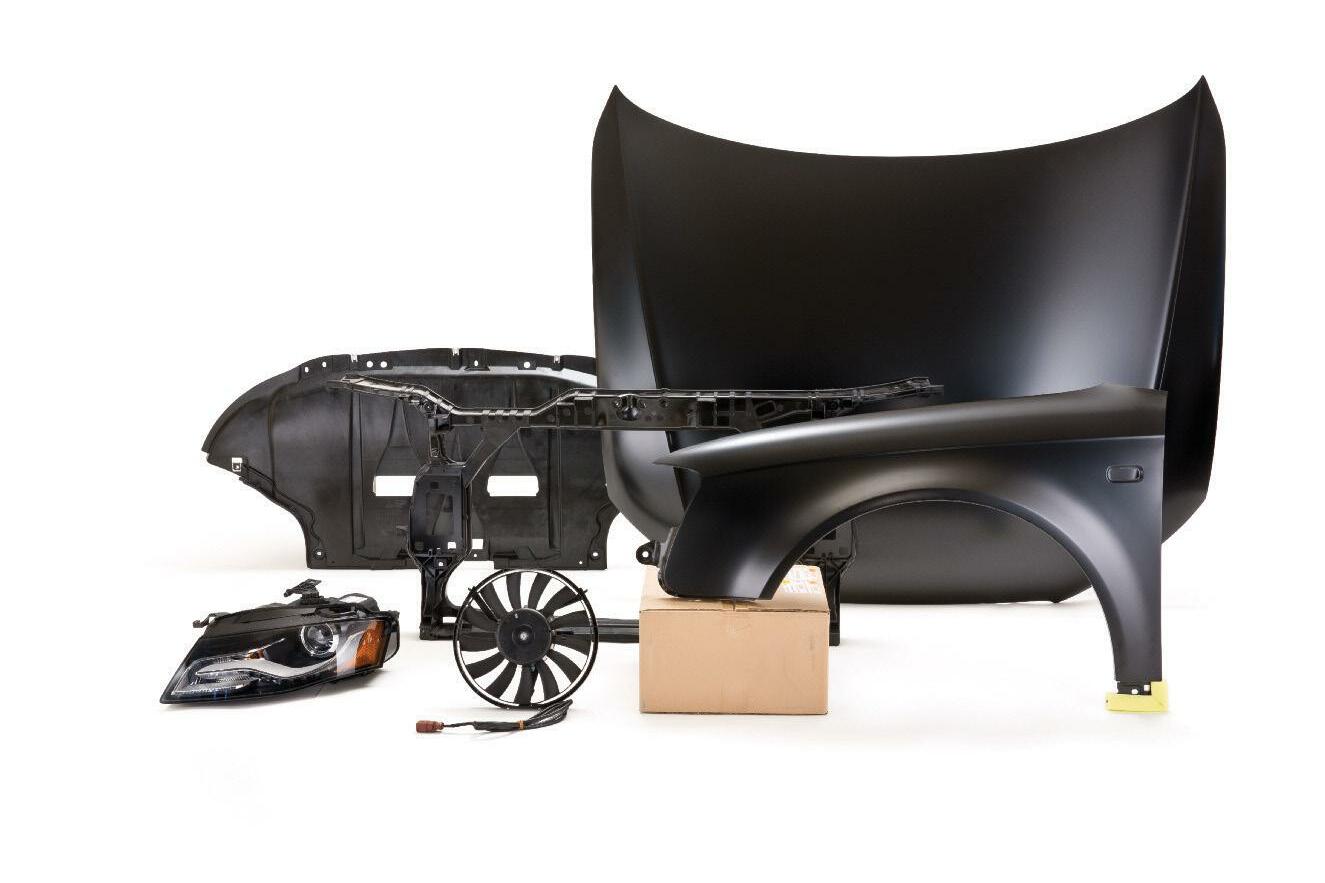
Town Audi
400 South Dean Street Englewood, NJ 07631
Parts Direct: 888.779.6792
Fax: 201.541.0314 Email: audiparts@townmotors.com Hours: Monday-Friday 7am-7pm Saturday: 8am-5pm
Porsche Genuine Parts & Service.

With our comprehensive inventory of Porsche Genuine Parts & Service, you will guarantee your customer optimal safety and reliability and ensure their Porsche remains what it is: an original.
Maintain Originality.
Town Porsche
105 Grand Avenue Englewood, NJ 07631 201-227-6505 town-motorcar.porschedealer.com
© 2019 Porsche Cars North America Inc. Porsche recommends seat belt usage and observance of traffic laws at all times.
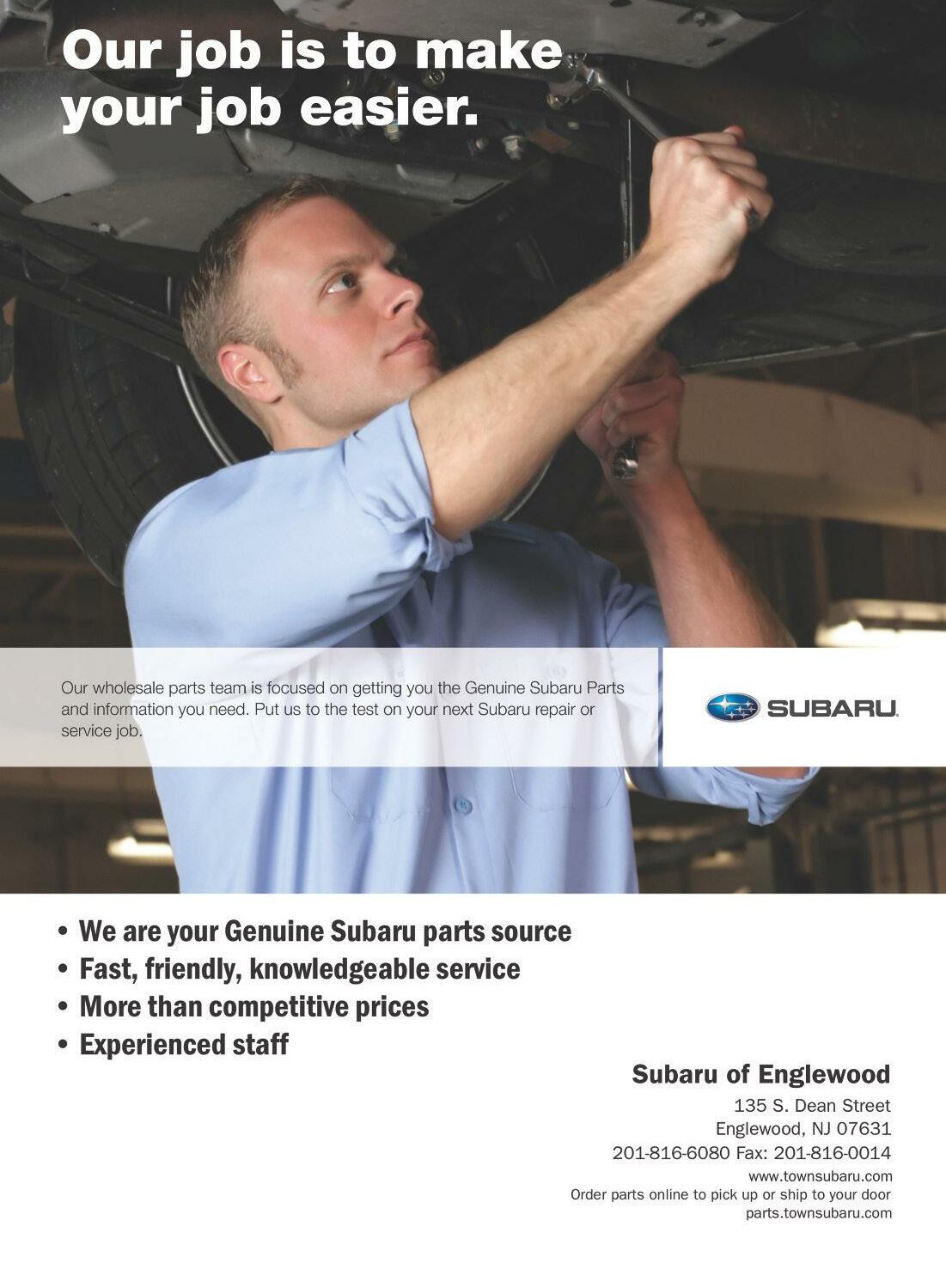

continued from pg. 31 professional tickets, so that’s another problem shops have to contend with.” McNee suspects that the drive toward certification will minimize insurer influence eventually. “The DRP model of fixing everything won’t work going forward. You can’t fix every vehicle that comes into the shop; you’re not going to be able to be everything to everybody. You definitely can’t be a slave to two masters.” Although Day does not think OEM certification will be necessary on every make and model, he feels that certification becomes necessary “when you start restricting parts. I suspect any parts around the battery are going to be restricted, but these certifications need to have teeth and mean something.” “Five years ago, you could fix anything without needing a certification, but as we move forward, OEM certification is likely to play a large role in where vehicles get sent because a lot of shops won’t be able to perform proper repairs on EVs,” Daniel suggested. “We have less than a decade before we’re really in trouble with technology and limited staff. What shops will be at the forefront of technology and also be able to afford the minimal number of technicians who will be around in 10 years?”
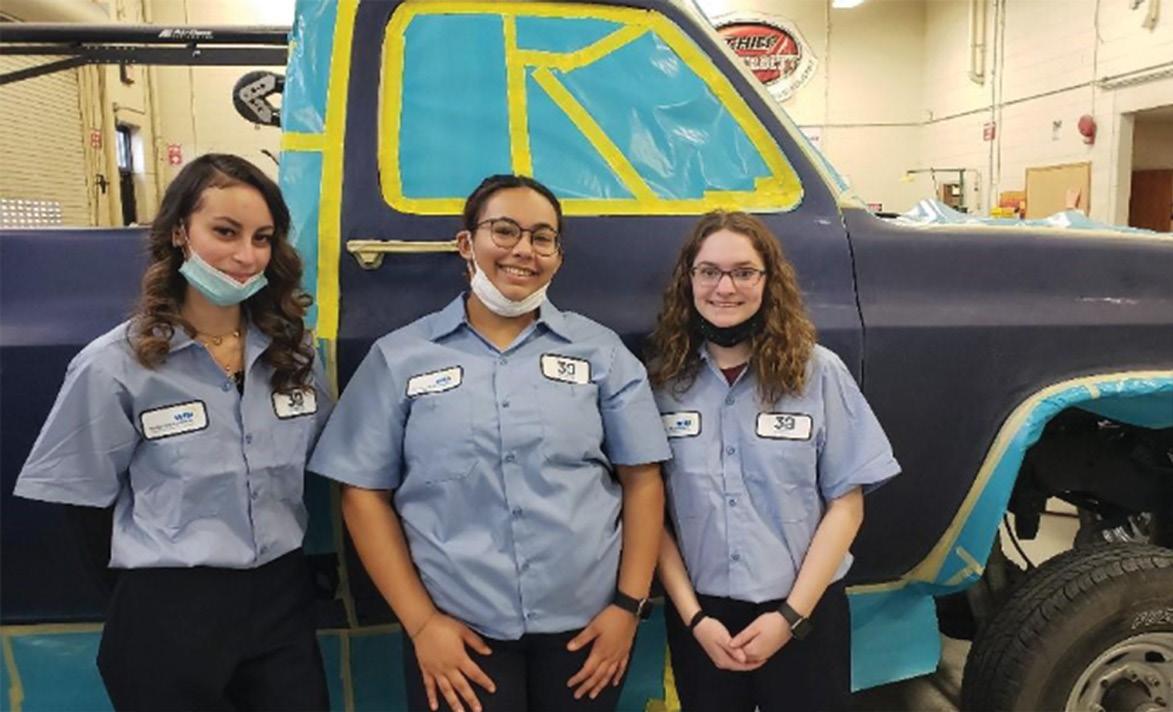
Investing in the Future of EV Repair
Collision shops that want to survive the Technical Tsunami
continued on pg. 38
Why Join WIN?
WIN offers education, mentoring and leadership development opportunities to build critical skills for success in the collision repair market. • Local/Regional Networking Events • Annual Education Conference • Educational Webinars • Mentoring Opportunities • Scholarship Program • School Outreach Program • Most Influential Women (MIW) Award
womensindustrynetwork.com
LYNNES
AUTO GROUP WHOLESALE DEPARTMENT
Genuine Service & Parts
SERVICE, SELECTION AND VALUE SINCE 1953
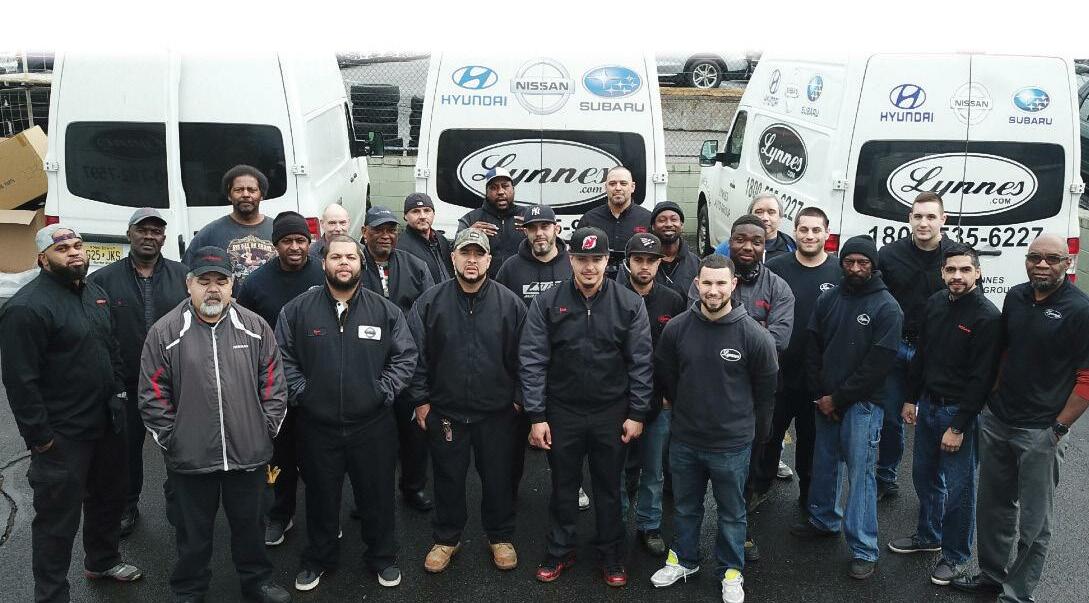
Delivering to the New Jersey/New York area.
Genuine Nissan parts are built to the same standards as Nissan vehicles. It’s no wonder they’re the driving force behind the most exhilarating vehicle on the road.
7 experienced countermen and 12 drivers ready to serve

Parts: 800-782-7597
E-mail: John@lynnes.com www.lynnesnissan.com Hours: M-F 7:30am - 6pm, Sat 7:30am - 2pm 5 Alva Street | Bloomfield, NJ 07003 Our wholesale parts team is here to make sure you find the exact Genuine Subaru Parts you need for every repair.
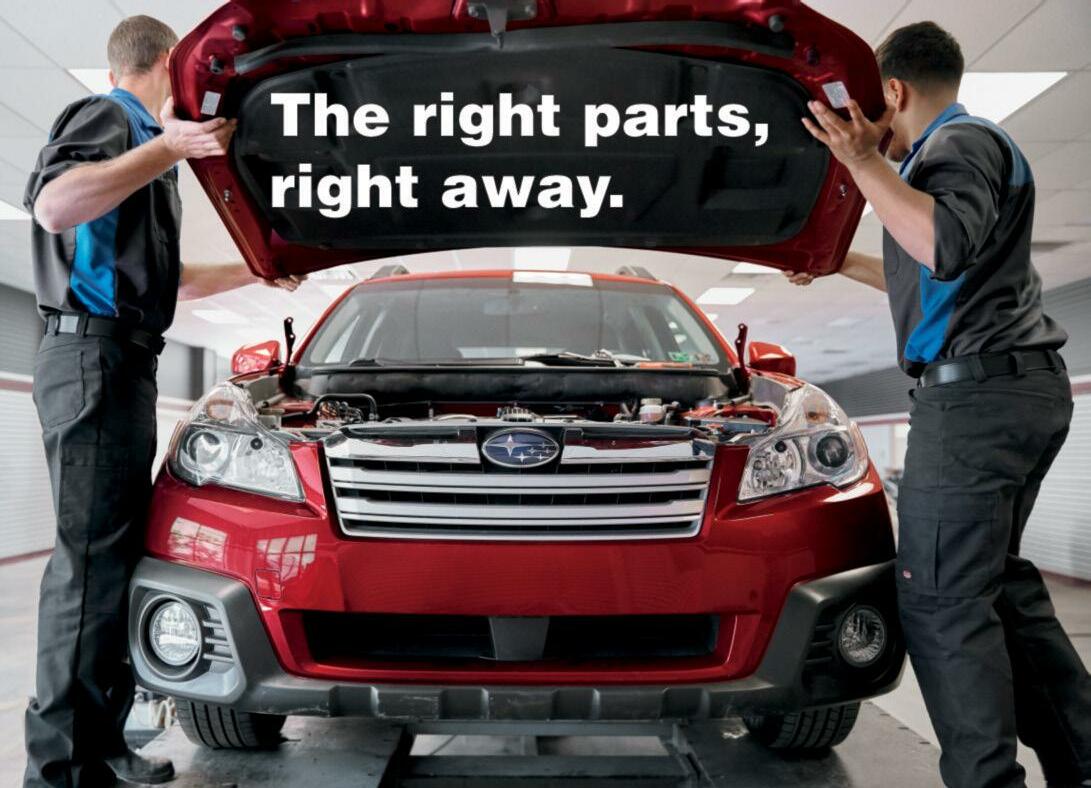
• Competitive prices • Fast, accurate deliveries • Genuine Subaru Parts that drive your business
Paul Miller Subaru 3469 Route 46 Parsippany, NJ 07054 Phone: 973-658-5714 Fax: 973-402-9591 mdaltilio@paulmiller.com www.paulmillersubaru.com/parts
continued from pg. 37 need to invest the time, money and energy into preparing for the EV evolution now. “Shops want to treat EVs like a regular car, but they’re not recognizing the complexity and dangers related to these vehicles,” McNee lamented. “If a technician gets electrocuted, he won’t be able to tell anyone. Even if they don’t have the proper training, many shops refuse to give up the repair without contemplating the repercussions it could cause. It’s time to rethink your business strategy because EVs are here.”
“It cost us $55,000 for ADAS equipment just for one OEM, so it’s difficult for the average mom-and-pop shop to get into the EV space right now,” Daniel acknowledged. “A lot of older shop owners don’t want to bother, so they’ve decided to shut down or sell to MSOs while they ride off into the sunset. There are currently 20,000 shops in the US, but that’s expected to decrease to about 17,000 facilities with an even smaller percentage of shops being equipped and trained to work on EVs.
“Our industry is at a turning point, and shops need to decide whether they want to be in business in the next five years,” he continued. “If you intend to continue operating your shop, you should have already started investing in the future, so you’ve got some catching up to do!” “To be able to work on EVs, you need to invest in the equipment, which is expensive and will narrow down the number of operating shops across the country,” Day offered. “Prepare for tomorrow by installing a 60-amp charging station in your shop now, but understand that you’ll need to have at least three within the next few years. All the systems in these cars talk to each other, so if you let the car go down for a few weeks, the memory battery goes bad and drains the main battery, requiring a reboot which is very difficult. It’s better to keep it charged, but you have to be equipped to do that.
“There’s a lot of factors that need to be considered, but it’s not all doom and gloom,” he added. “There’s a lot of opportunity in this technology…as long as you’re prepared to do it correctly.”
“People often get defensive because they don’t like being corrected, but if you’re not truthful with yourself, you’ve only got yourself to blame,” McNee stated. “The shops that are going to succeed in the future are the ones who spent the time to get ready. They’re paying attention; they’re involved. I don’t believe most shops are prepared, but I’m not the one who should answer that.” McNee posed a question to New Jersey Automotive readers:
“Let’s have the shops answer that question. Are you prepared based on the above information? If you haven’t started this quest yet, you’re 10 years behind the times!”
